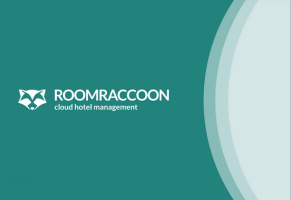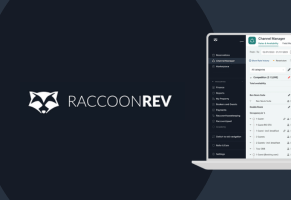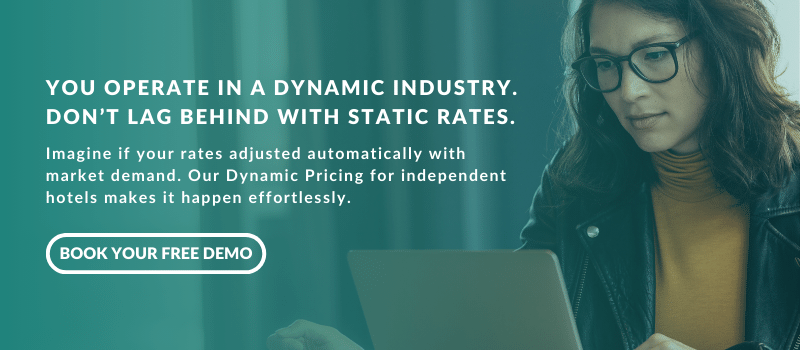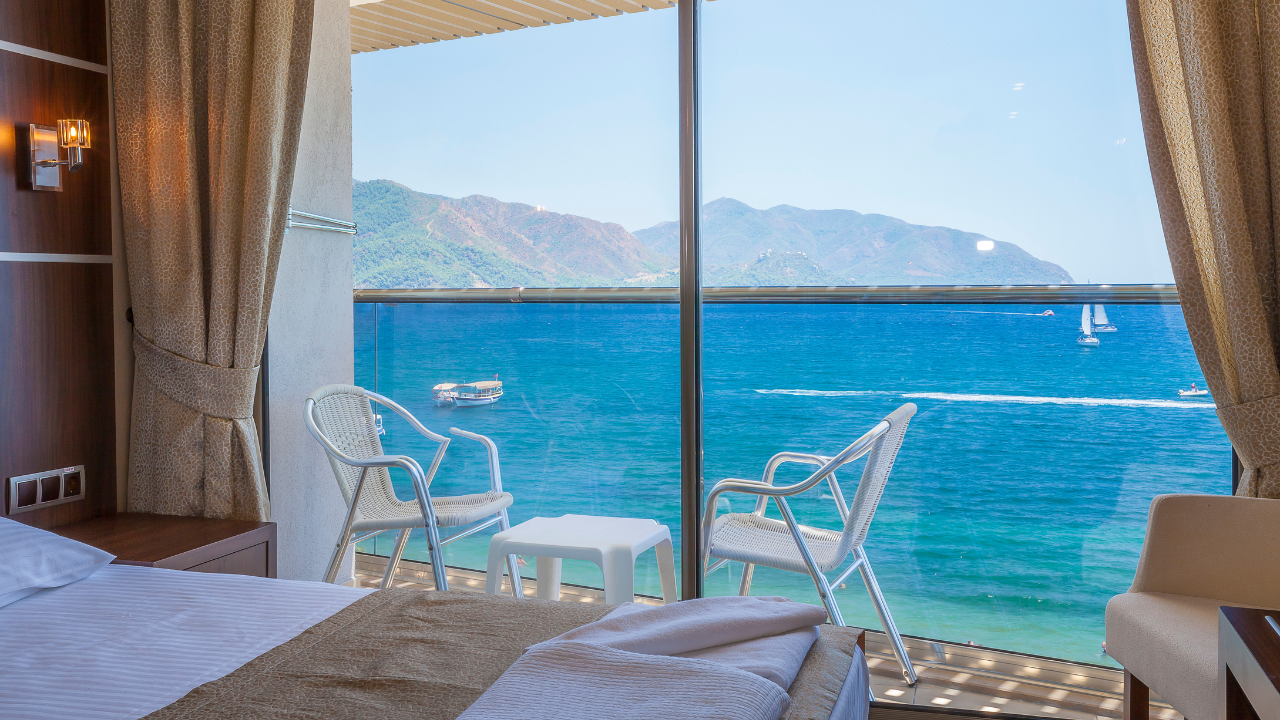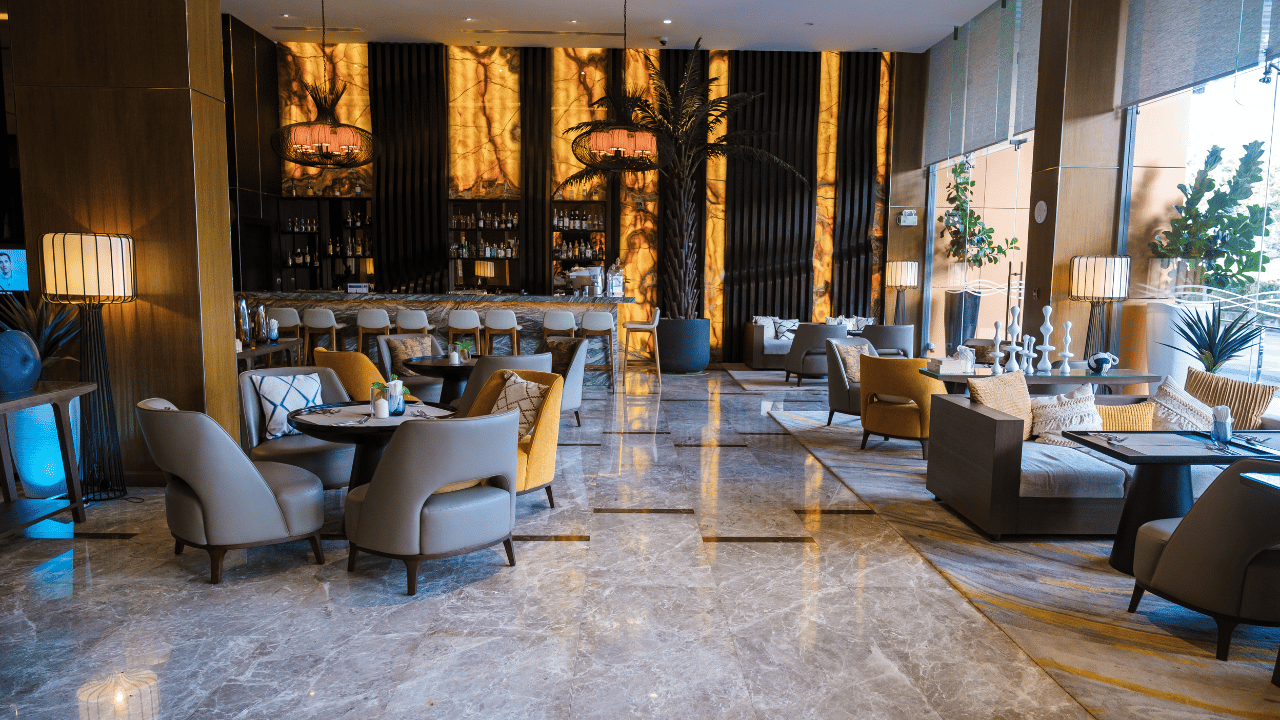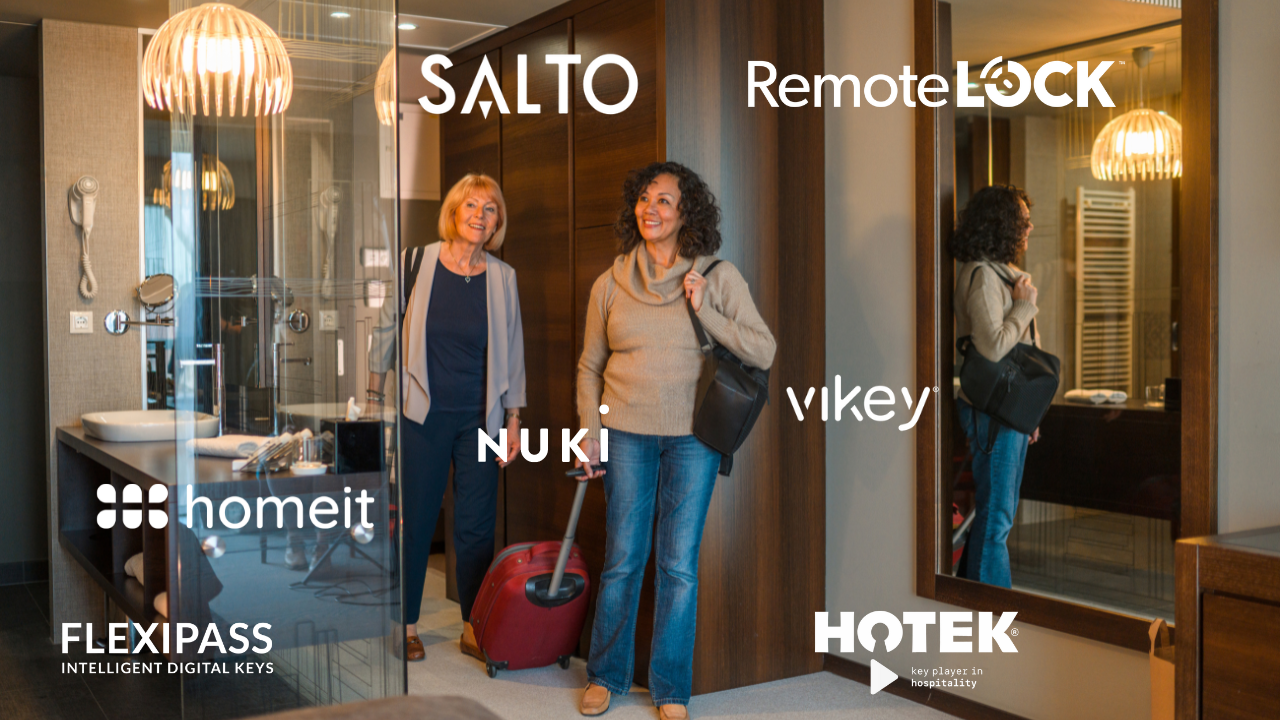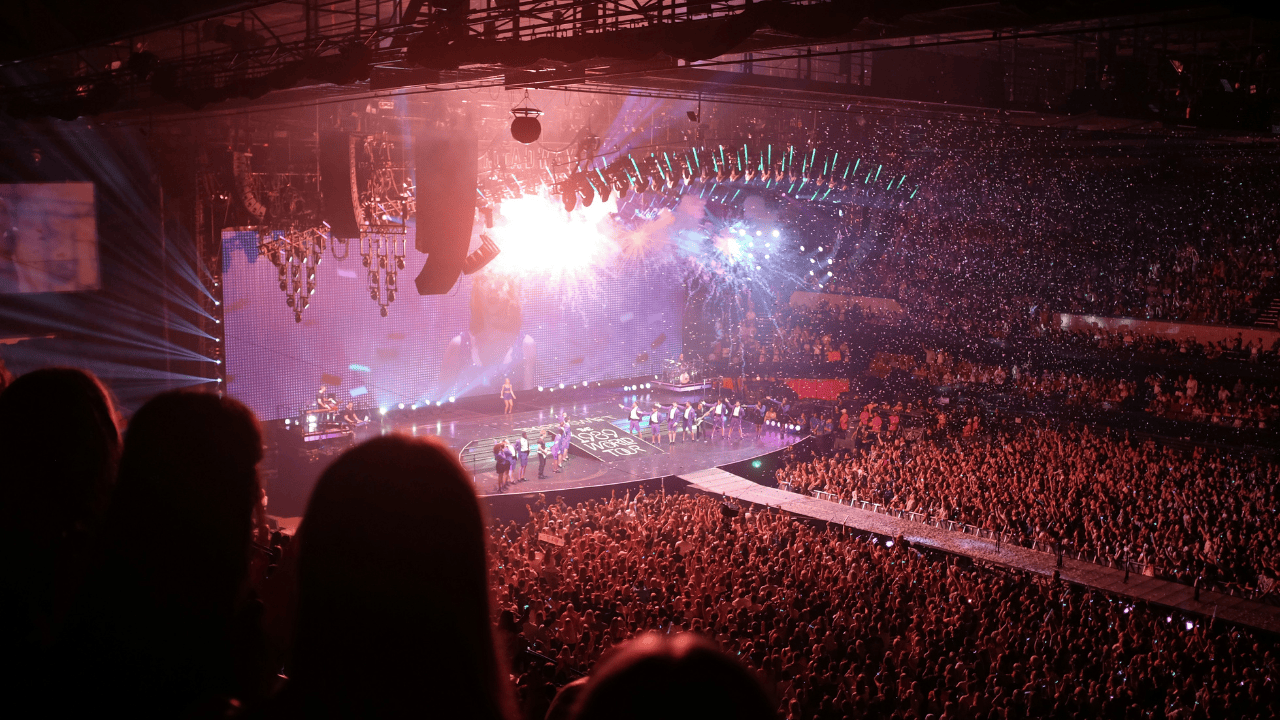CORE PRODUCT
What is Hotel Dynamic Pricing?
June 11, 2024 Nicky. M
Share this post

Hotel dynamic pricing, also known as time-based pricing, is an important room rate optimisation strategy in the hospitality industry. At its core, the industry is dynamic, with constantly changing demand and guest booking patterns. This means that to stay competitive, hoteliers must move beyond traditional supply and demand principles such as seasonal rates and instead base pricing on real-time data.
Today, thanks to the increased adoption of hotel pricing software, hoteliers are able to easily execute dynamic pricing strategies through automation, capturing hotel room demand year-round to effectively maximise revenue and occupancy.
This guide explains why dynamic pricing is important for hotels, how it works, and how it can be used successfully in real-world scenarios. It takes fluctuating demand into consideration and offers actionable insights for success.
What is the Difference Between Static and Dynamic Rates for Hotels?
The difference between static and dynamic hotel rates lies in their flexibility. Static rates are relatively fixed, while dynamic rates are determined by real-time market data.
Static rates are the traditional way of setting rates. They consider classic supply and demand principles like standard weekly rates, higher weekend rates, and increases during peak seasons. Static rates remain unbothered by external factors such as fluctuations in traveler demand and competitor activity.
On the other hand, dynamic pricing provides hoteliers with data-driven insights to maintain optimal room rates at all times. This approach considers various factors, including current market conditions, and allows rates to fluctuate dynamically on a daily or even hourly basis.
Today, dynamic pricing software is used to automate revenue management, empowering hotels to adjust rates based on demand, save time, and increase revenue.
Why is Dynamic Pricing Important for a Hotel?
For revenue managers, having an occupied room is always better than having an empty room, even if it means selling the room for a slightly lower rate. Even better, selling a room at its maximum potential value is the ultimate goal. For this reason, dynamic pricing can be an important strategy for a hotel that’s looking to optimise occupancy and maximise revenue.
Advantages of using dynamic pricing at your hotel
- Maximise profit: In times of high demand and limited availability, seize the opportunity to sell remaining rooms at premium rates. Example: Major events like the Taylor Swift Eras Tour.
- Boost occupancy: When demand decreases, you can reduce your rate to improve the likelihood of getting a booking. Example: Last-minute deals to secure bookings before your inventory expires.
- Gain a competitive advantage: Monitoring competitor activity with a Rate Shopper Tool will allow you to align your rates with those of your competitors to avoid being undercut. Top tip: Benchmark your rates against three competitors to get well-rounded results.
- Improve demand forecasting: Use historical data from your hotel reports and compare it with current market conditions to estimate future rates. Example: Check your rates and the average booking lead time in the previous year to gain insight into how to better target guests today while considering current market conditions.
How Exactly Does Dynamic Pricing Work in Hotels?
When it comes to dynamic pricing in the hotel industry, you’re basing your price changes on current conditions and real-time market data such as major events, weather, booking windows, competitor behaviour, economic conditions, traveler patterns, and supply and demand.
A hotel revenue manager will track what’s happening in the market throughout the day and week to spot any noticeable changes. Here are a few factors that they might look at:
1. Major Events: If there’s a big event nearby, like a concert or sports game, hotels might raise their prices because more people are looking for rooms.
2. Weather: Bad weather, like heat waves, might lead to lower prices if fewer people are traveling or postponing trips and higher prices if people need a last-minute place to stay.
3. Competitor Behaviour: Hotels check what nearby hotels are charging and adjust their prices to stay competitive.
4. Traveller Patterns: Beyond looking at when people are most likely to travel, like holidays or weekends, gain deeper insights into booking behaviors and preferences like the length of stay and additional purchases.
5. Booking Lead-Time: How far in advance guests book can influence pricing, with last-minute bookings sometimes costing more due to limited availability.
6. Supply and Demand: If rooms are filling up quickly (high demand) and there are fewer available rooms (low supply), prices will go up. If there are many empty rooms (high supply) and few guests (low demand), prices might drop.
Let’s explore two real-world scenarios to see how this could play out in practice.
From Theory to Practice: Real-World Scenarios of Hotel Dynamic Pricing
The Grand Seas Hotel
The Grand Seas Hotel is a boutique hotel located on the picturesque coastline of a small city. It generally enjoys a steady stream of guests, with room rates at £180 per night during the standard season, £200 on weekends, and £230 during peak season.
The Unexpected Event
The prestigious International Film Festival has chosen their city as its new venue for the upcoming year. The festival, known for attracting celebrities, filmmakers, and media from around the globe, is scheduled over a weekend in September, typically a standard season period for the Grand Seas Hotel.
Initial Reactions
The announcement creates an immediate buzz. Movie enthusiasts, media personnel, and tourists flock to the city’s travel websites, eager to secure accommodations for the festival weekend. The Grand Seas Hotel team quickly recognises this event’s potential impact on their bookings.
The First Adjustment
Reacting swiftly, the hotel manager adjusted its rates for the festival weekend. They raised the rates from the standard £180 to £260 per night, anticipating the high demand. They also created special packages that included a “Stars and Sands” experience: a three-night stay with exclusive amenities like a beachside dinner, festival shuttle service, and a complimentary film screening.
The Surge Continues
As the festival dates approach, tickets sell out rapidly, and hotels in the area start to fill up. The Grand Seas Hotel closely monitors the booking pace. With rooms selling faster than anticipated, they make another strategic decision. When the occupancy rate hits 75% two months before the festival, they increase it again to £300 per night.
Last-Minute Demand
Fast forward to two weeks before the festival. The city is buzzing with last-minute planners and latecomers who finally secured festival tickets. Observing the scarcity of available rooms in the city, the Grand Seas Hotel decides to implement another rate hike for the remaining rooms, bringing the price to £350 per night.
Encouraging Extended Stays
To maximise revenue and smooth out occupancy rates before and after the festival, the hotel offers discounted rates of £180 for Thursday and Sunday nights. This strategy encourages guests to extend their stay, providing the hotel additional revenue on nights that might otherwise have lower occupancy.
The Impact
After the festival, the Grand Seas Hotel conducts a thorough analysis of its dynamic pricing strategy. They find that their proactive adjustments allowed them to significantly increase their revenue compared to maintaining static rates. The average revenue per room during the festival weekend was more than 50% higher than a typical standard season weekend. Additionally, the special packages were a hit, adding value for guests and enhancing their overall experience.
The Bliss Boutique Hotel
The Bliss Boutique Hotel is a contemporary hotel in a bustling metropolitan city known for its vibrant business district and numerous attractions. Room rates are typically set at £200 per night during the standard season, £220 on weekends, and £260 during peak season.
Observing Changing Traveller Behaviour
The management team at Bliss Boutique Hotel has noticed a significant shift in traveller behavior over the past year. More guests are booking at the last minute, influenced by the growing trend of spontaneous travel facilitated by mobile booking apps. Additionally, business travelers are increasingly extending their stays to blend work and leisure, creating a new category of “bleisure” travel.
Adapting to Last-Minute Bookings
Recognising this trend, the hotel management implements a dynamic pricing strategy that capitalises on the changing booking patterns. They start by closely monitoring booking lead times. Data analysis shows a spike in bookings within three days of check-in. To optimise revenue, the hotel increases rates by 15% for bookings made within 48 hours of arrival.
Attracting the Bleisure Travelers
To appeal to the rising number of bleisure travelers, the Bliss Boutique Hotel introduces a “Stay & Play” package. This package offers a 10% discount for guests who book a stay of five nights or more, combining weekdays with weekends. The package includes complimentary high-speed Wi-Fi, access to a co-working space within the hotel, and discounted tickets to nearby attractions.
Dynamic Weekday Adjustments
The hotel also notices that occupancy rates vary significantly between weekdays and weekends. Traditionally, business travelers fill rooms during the weekdays, while tourists dominate the weekends. However, with the bleisure trend, there’s an opportunity to boost mid-week occupancy.
The management decides to lower the room rates by 10% for Tuesday and Wednesday nights, encouraging leisure travelers to start their vacations early or extend their stays.
Real-Time Price Adjustments
With the integration of a sophisticated revenue management system, Bliss Boutique Hotel can adjust its room rates in real-time based on occupancy levels and competitor pricing. On days when the hotel is less than 50% booked, they implement flash sales with discounts of up to 20% to attract last-minute travelers. On the other hand, when occupancy exceeds 80%, rates are increased by 20% to maximise revenue from the remaining inventory.
The Impact
After several months, the management team analyses their dynamic pricing strategy. The results are promising: the hotel’s average daily rate (ADR) and revenue per available room (RevPAR) have both increased. The strategy of targeting last-minute bookers and bleisure travelers has significantly improved occupancy rates, especially during mid-week.
5 Effective Strategies to Execute Dynamic Hotel Pricing
Drawing from the real-world scenarios mentioned above, it’s clear that there are a few ways to execute dynamic pricing effectively.
Different strategies exist for evaluating hotel performance and making the appropriate price adjustments. Learn more about the top 5 dynamic pricing strategies below.
1. Monitoring occupancy
A good rule of thumb is to monitor your hotel’s occupancy, especially how quickly rooms are being filled. This will allow you to set the right prices in order to either maximise revenue from each room or sell your expiring inventory before it’s too late. Your competitor’s availability also plays a crucial part in how you’ll dynamically price your rooms.
If you see that your closest competitor is sold out, it means that you now have more control of the market. This allows you to sell your remaining rooms at a higher rate. Similarly, if your occupancy is low, you could lower your rates to ensure they are lower than what your competitor charges. This will help your hotel drive more demand than other properties in the area.
2. Responding to unusual market fluctuations
In 2023, RoomRaccoon reported an unusually long peak travel season across Europe because of the summer heat wave. As a result, many travelers delayed their summer vacations until later in the year. Being aware of such events in real-time allows you to quickly take advantage of opportunities to attract more bookings or increase your profits.
In this case, hotels could extend their peak season pricing and marketing efforts to cover the new busy periods and offer flexible cancellation policies at a premium price.
3. Creating ‘peaks’ outside of peak season
Remember to plan for busier times throughout the year, not just relying on the usual peak season. In the real-life scenario above, we see that the Grand Seas Hotel prepared for the International Film Festival, which was outside their peak season.
Demand can easily fluctuate, and that’s why it’s important to forecast strong performance periods and plan ahead with dynamic pricing rules that optimize your rates for these golden opportunity periods.
4. Studying guest booking patterns and guest segments
By studying booking patterns and guest segments, you can identify trends and opportunities for your hotel. The Skyline Hotel observed a surge in leisure travelers and an increase in last-minute bookings and capitalised on these insights by creating targeted packages and increasing rates based on lead times to check-in. Understanding your guests’ booking patterns and segments can help you optimise your pricing strategy and develop revenue management strategies for greater success.
5. Optimising for room type preference
Room type preferences can be influenced by seasonality and guest segments. During the holiday season, families may prefer larger suites. In summer, rooms with views are in demand. Business travellers prioritise rooms with dedicated workspaces mid-week, while couples prefer rooms with romantic amenities on weekends.
It’s also important to monitor competitors providing similar types of rooms. Using dynamic pricing software, you can dynamically adjust your rates in response to changes in your competitors’ room categories. For instance, if a competitor sells out of a popular room type, you can raise your rates for the same room type.
Bonus Tip! Cheaper rooms are likely to sell out first. To free up the less expensive rooms at your hotel, you can offer room upgrades during online check-in. This strategy is an excellent way to boost occupancy by making your more affordable rooms available again.
Dynamic Pricing Software for Independent Hotels
Independent hotels and smaller accommodation properties such as boutique hotels, B&Bs, hostels, and serviced apartments often lack the resources to hire a dedicated revenue manager or adopt an expensive revenue management system like those found in larger hotel chains.
However, independent hoteliers should not have to miss out on the opportunity to increase their revenue and maximise occupancy rates by implementing essential dynamic pricing strategies in an industry with constantly fluctuating demand.
And that’s why RoomRaccoon provides hoteliers with integrated dynamic pricing functionality, making it accessible and effective for those who may not have extensive experience in revenue management or wish to keep costs low. This tool allows you to set up dynamic pricing rules that automatically adjust the pricing of select rate plans based on room availability and the lead time to check-in. If you unlock the RaccoonRev upgrade, you can also set up dynamic pricing rules based on competitor behavior.
The best part? The dynamic pricing software is accessible in all RoomRaccoon packages, empowering hoteliers to easily apply pre-defined pricing rules. Additional custom rules are available for Premium and Enterprise subscribers.
How to Use RoomRaccoon’s Dynamic Pricing Rules
You can implement dynamic pricing rules based on the parameters below and apply them to selected rate plans.
1. Room availability
The percentage of rooms left to sell.
2. Lead time to check-in
The number of days prior to the booking check-in date
3. Price discount or increase
The percentage at which the rate will be discounted or increased.
4. Room category
The applicable room categories.
5. Competitor availability (Exclusive to the RaccoonRev upgrade)
Based on insights from three selected competitors.
Get Started With Dynamic Pricing at Your Hotel
Effective yet simple to use, RoomRaccoon’s dynamic pricing helps you maximise revenue, save time on manual rate updates, and bolster occupancy.
- Refined Room Rates
Strike the ideal balance between competitive pricing and revenue optimisation.
- Revenue Management
Enhance overall profitability with precise, targeted pricing strategies.
- Improved Market Responsiveness
Quickly adjust to market dynamics and never miss out on capturing demand.
- Boosted Operational Efficiency
Minimise the manual effort of updating rates regularly.
A dynamic pricing success story featuring the Bull Auberge
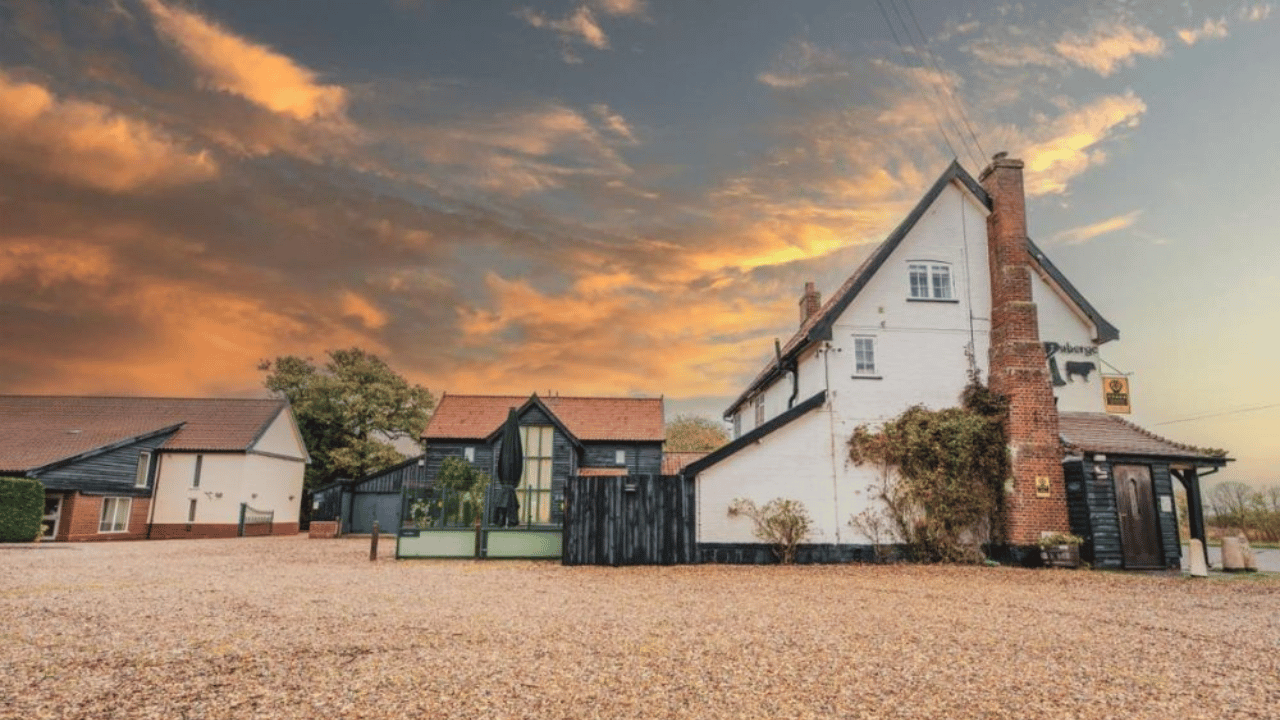
The Bull Auberge is a proud RoomRaccoon partner, and owners Jake and Katy share their success story of implementing dynamic pricing.
“With RoomRaccoon, the Bull Auberge has harnessed the power of advanced native pricing tools like RaccoonRev and Dynamic Pricing. RaccoonRev allows them to benchmark their rates against competitors in their area, and they have implemented sophisticated dynamic pricing rules to capture demand, sometimes even a year in advance. The user-friendly interface streamlines operation, and automated rate updates save them valuable time.” Read the success story.
Get a free demo of RoomRaccoon tailored specifically to your property management needs and revenue goals. Talk to one of our experts today.
Follow us
Nicky. M
Nicky is RoomRaccoon's Senior Content Manager, combining a love for travel with a practical approach to improving hotel performance through tech and insightful tips. Join her journey where travel, hospitality, and technology meet.
Related Posts
Subscribe to our newsletter for more on the latest hospitality & RoomRaccoon updates delivered straight to your inbox!
